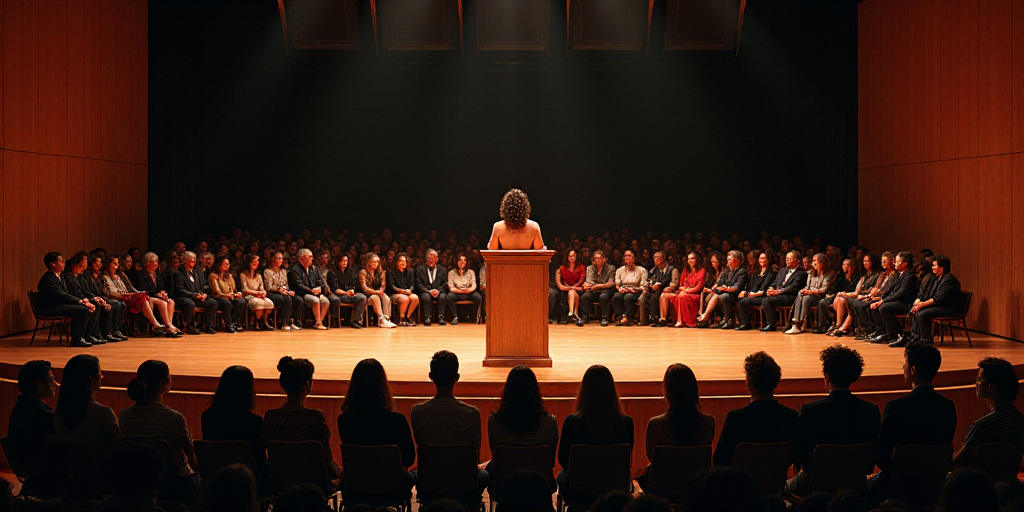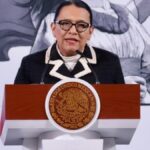Mexico City to Host FIFA World Cup 2026 from June 11 to July 5
- Mexico City will host the FIFA World Cup 2026 from June 11 to July 5.
Mexico City’s Commitment to a Fair World Cup and Just Society
“Under the slogan of a clean game and a just society, Mexico City reaffirms its commitment to being a host of freedoms, respectful of human rights, diverse, feminist, cosmopolitan, and fraternal, welcoming all cultures and nations”: CBM
A Grand World Cup Celebration: Mexico City’s Preparations
In an event that gathered government federal and Mexico City officials, as well as business, sports, and cultural representatives, the city’s progress and preparations for hosting the FIFA World Cup for the third time in its history were presented. The event highlighted Mexico City’s rich history, culture, and warm-hearted people.
Clara Brugada Molina, Head of Government of Mexico City
Clara Brugada Molina, the Head of Government of Mexico City, led the presentation, emphasizing the city’s millenary legacy and rich history as it commemorates 700 years since the founding of great Tenochtitlan. She highlighted that Mexico City, being the largest among the 15 host cities, aims to be the epicenter of football passion while honoring its roots where the ancient ball game originated more than 3,500 years ago.
The Ancient Ball Game and Its Cultural Significance
Brugada Molina referred to the ancient ball game as a fundamental part of culture and understanding of the universe for their ancestors, the Aztecs. The ball game symbolized the cosmos, with the ball’s movement on the court representing the sun’s daily journey to the sky. The courts were seen as an entrance to the underworld.
Mexico City’s Comprehensive Preparation Plan for World Cup 2026
The preparation of Mexico City for the World Cup 2026 includes an integral plan of actions and projects that will leave a lasting legacy for its residents. Key aspects include:
- Urban regeneration and neighborhood revitalization: Comprehensive transformation of urban services, habitat, lighting, murals, pavement, and bench rehabilitation in neighborhoods near the Azteca Stadium.
- Water security for all: Reinforcement and increase of water supply, replacement and rehabilitation of wells, including the delivery of Azteca Stadium’s water well for the benefit of residents, as well as construction of stormwater collectors.
- “Yólotl Anáhuac” Program: Highlighting the cultural heritage and identity of indigenous peoples through murals and facade transformations.
- New mobility routes: Introduction of the new trolebús “Ruta Silvestre de los Pedregales” connecting various colonies between Tlalpan and Coyoacán with electric units symbolizing local fauna.
- Public spaces and recreational areas: Creation of a 5,000 m² public space in Santa Úrsula that will house a dinosaur-themed park “Coyosauria” and a Public Care System.
- Azteca Stadium Environment Transformation: Remodeling of the access bridge, reorganization of street commerce, and remodeling of Huipulco, Universidad, and Taxqueña CETRAMs.
- Complete Lighting: Full lighting of the stadium area and pedestrian connection recovery Acoxpa.
- Public Transport Improvements: Modernization of the “El Ajolote” Light Rail with acquisition of 17 new double-decker trains to reduce waiting times and increase capacity, along with Taxqueña Terminal adaptation.
- Gran Tenochtitlan Bikeway: Construction of 34 km of bikeway along Calzada de Tlalpan from Periférico to the Zócalo.
- Wayfinding Tourist Orientation System: Installation of an interactive system guiding visitors through neighborhood maps and transportation information.
- Centrobús Huitzilopochtli: Electric buses traversing the main routes of the Historic Center.
- Zócalo Capitaline Videomapping: Architectural spaces will feature videomapping.
- Calzada Verde Flotante Peatonal: Construction of a 1.5 km elevated pedestrian pathway over Calzada de Tlalpan.
- Bajopuente Recovery: Transformation of spaces under Calzada de Tlalpan bridges to improve pedestrian connectivity.
- Principal Avenues Lighting: Illumination of 32 km Calzada de Tlalpan and recovery of Insurgentes Tlatelolco Cuicuilco, Bienvenida, and Garibaldi circuits.
- Security Reinforcement: Expansion of the video surveillance network with acquisition of 40,000 new cameras, totaling 123,400 cameras, making Mexico City one of America’s most surveilled cities.
- Renewed Tourist Routes: Creation of service and information modules in key areas like the Historic Center, Xochimilco, Azteca Stadium, Coyoacán, and Garibaldi.
- Green World Cup: Implementation of a comprehensive sustainability plan, improvement of Xochimilco embarcaderos, and promotion of agritourism and ecotourism with the goal of a zero-waste World Cup.
- FIFA Fan Festival at the Zócalo: Transformation of the emblematic square into a celebration space with live transmissions, sports events, concerts, and exhibitions.
- Futbolero Festivals in Boroughs: Organization of 16 simultaneous festivals across the city featuring projected matches, recreational, sports, and gastronomic activities.
- “Mundialisto” in the City: Transformation of 100 sports fields, community tournaments, and creation of teams to encourage citizen participation.
- Guinness World Record for the Largest Football Class: Attempt to break the record in January 2026 at the Zócalo.
- Monumental Wave: Mass greeting to the World Cup from the Zócalo to Azteca Stadium.
- Inclusive and Peaceful Football: Promotion of various football modalities for people with disabilities, the trans community, and migrants.
- Cultural Exhibitions: Immersive exhibitions on the pre-Hispanic ball game with “El Juego Eterno”, memorabilia collections from past World Cups (“Mis Mundiales”), “Épica” Memorabilia collections, and contemporary art related to football.
- FIFA Trophy Tour: Exhibition of the coveted trophy in boroughs and the Zócalo.
- International Media Center: Installation at Los Pinos to coordinate global coverage of the event.
Federal Government’s Support and Collaboration
Rosa Icela Rodríguez, Secretary of the Federal Government, emphasized that the 2026 FIFA World Cup will be a historic event for Mexico, particularly for Mexico City as the host of the opening match at Azteca Stadium. She highlighted the opportunity to showcase Mexico’s culture, hospitality, and grandeur to the world while projecting an inclusive and joyful country image.
Joint Efforts for a Safe and Meaningful Event
Rodríguez stressed the collaboration between the federal government, led by President Claudia Sheinbaum Pardo, and Mexico City’s government to ensure a secure and significant event, anticipating the arrival of millions of visitors. She reaffirmed the federal government’s support for sports as a tool for social transformation and peace-building, celebrating sports’ ability to unite and inspire.
Estadio Azteca’s Remodelation Progress
Félix Aguirre, Director of Estadio Banorte (Azteca Stadium), reaffirmed the commitment and significant progress in remodeling the iconic stadium, with an investment exceeding 2 billion pesos to modernize its facilities and enhance fan experience.
With these initiatives, Mexico City is ready for the World Cup 2026, 400 days away, aiming to set a landmark event.






